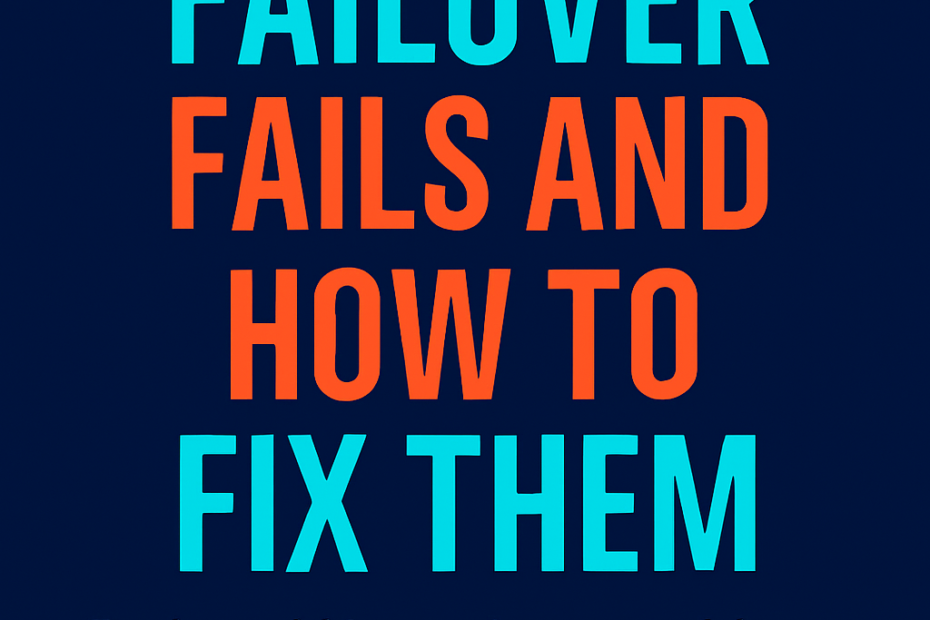When you’re building a SaaS product, background jobs are the silent workhorses—sending emails, processing payments, syncing data. But what happens when your queue driver fails at 3 AM and jobs vanish into the void? That’s where Laravel’s failover queue driver becomes a game-changer.
Let’s dive into real-world examples of how developers use queue failover in production—and the lessons they’ve learned about building bulletproof systems.
🛠️ Real-World Example #1: Redis → Database Failover for Email Delivery
A high-traffic SaaS platform used Redis as its primary queue driver for sending transactional emails. One night, Redis crashed during a deployment, and thousands of queued emails were lost.
Fix: They implemented Laravel’s failover queue driver with Redis as primary and database as secondary. When Redis failed, jobs were automatically rerouted to the database queue.
Lesson: Failover isn’t just about uptime—it’s about preserving trust. Losing emails meant lost onboarding momentum and frustrated users. Failover restored reliability without manual intervention.
🧰 Real-World Example #2: Redis → SQS → Database for Geographic Redundancy
A global SaaS product serving users across continents needed geographic redundancy. They configured a failover chain: Redis (fastest) → AWS SQS (regional) → database (last resort).
Lesson: Failover can be layered for performance and resilience. Redis handled local jobs, SQS absorbed regional spikes, and the database caught everything else. This setup reduced latency and improved job durability.
🧪 Real-World Example #3: Redis → Sync for Admin Panels
For internal admin tools, a startup used Redis for queues but added a sync failover for critical jobs like password resets and role updates.
Lesson: Failover isn’t just for scale—it’s for control. Sync fallback ensured instant execution when Redis was down, keeping internal workflows smooth.
🧾 Real-World Example #4: Redis → Database for Invoice Generation
A billing SaaS platform used Redis queues to generate and email invoices at scale. During a peak billing cycle, Redis hit a memory ceiling and stopped processing jobs.
Failover Setup: Redis as primary, database as secondary.
Lesson: Failover protects revenue-critical workflows. Without it, invoices would’ve been delayed, triggering support tickets and payment issues. The database queue kept the billing engine alive while Redis was restored.
📦 Real-World Example #5: SQS → Redis for Batch Imports
A SaaS tool that syncs external CRM data used SQS for queueing batch imports. When SQS throttled requests due to API limits, jobs stalled.
Failover Setup: SQS as primary, Redis as fallback.
Lesson: Failover isn’t always about outages—it’s about throttling and rate limits. Redis picked up the slack, ensuring imports continued without manual retries.
🔄 Real-World Example #6: Redis → Null for Non-Critical Jobs
A startup used Redis for all jobs but added a null failover for non-critical tasks like logging user activity or updating analytics.
Failover Setup: Redis → null
Lesson: Sometimes, dropping a job is better than blocking the queue. By routing non-essential jobs to null, they avoided queue congestion during Redis downtime and kept core features responsive.
⚠️ Common Pitfalls & Gotchas
- Workers must point to primary drivers, not the failover chain. Laravel Horizon, for example, should be configured to monitor Redis directly.
- Failover doesn’t retry failed jobs—it reroutes unprocessed ones. You still need retry logic and monitoring.
- Testing failover is essential. Simulate outages and monitor event listeners to confirm rerouting works23.
🧠 Lessons Learned in SaaS Resilience
- Failover is proactive, not reactive. Don’t wait for a crash to implement it.
- Layered failover = layered confidence. Use multiple drivers to balance speed and safety.
- Monitoring is non-negotiable. Use Laravel events to get alerts when failover kicks in.
- Failover complements retries—not replaces them. Build both into your queue strategy.
🔚 Final Thoughts
Laravel’s failover queue driver is more than a feature—it’s a philosophy of resilience. In SaaS, where every background job can impact user experience or revenue, failover ensures your system bends but doesn’t break.
If you’re building with Laravel and haven’t explored failover yet, now’s the time. Your future self—and your users—will thank you.
References (3)
- Laravel Queue Failover: A Developer’s Guide to Building Bulletproof …. https://www.nihardaily.com/115-laravel-queue-failover-a-developers-guide-to-building-bulletproof-background-jobs
- The Laravel failover queue driver: stop losing jobs. https://benjamincrozat.com/laravel-failover-queue-driver
- How to Implement Laravel’s Failover Queue Driver for Resilient Queues. https://jitendra.dev/how-to-implement-laravels-failover-queue-driver-for-resilient-queues
